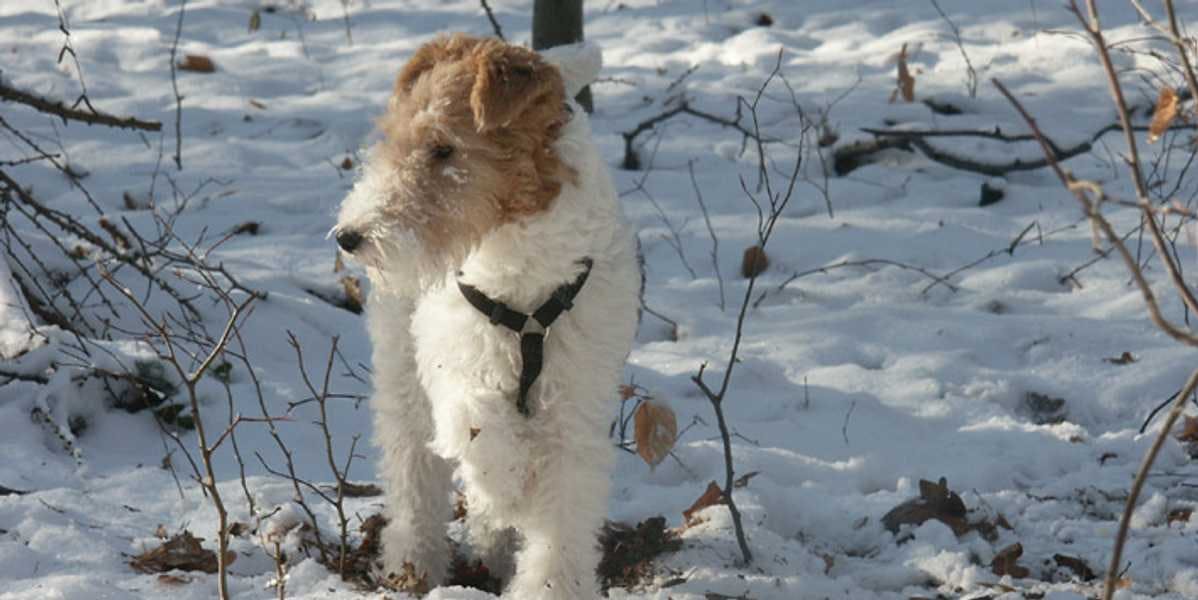The Fox Terrier was first bred in the 18th century, in England. The goal was to create a breed that was small enough to get into the foxes' den.
It was important that the dominant color of the breed was white so that the hunter could easily spot the dog.
These needs laid the foundation for what we know today as the Fox terrier. The breed is currently available in two versions: rough-haired and straight-haired.
Fox Terrier
What are the characteristics of a Fox Terrier?
They are tough, brave, and active, medium-sized dogs who love to be "where it happens". Do you live an active life, and enjoy walks in nature? Then the Fox terrier can be an excellent hiking companion.
In addition to being a skilled fox hunter, the Fox Terrier can also be used to search for injured animals, and as an offensive dog on small and large game. They can also hunt mink, martens, and badgers in dens.
Although these are activities they thrive in, it is not necessary to use them for hunting. As long as they are sufficiently activated, the Fox terrier works great as a family dog.
Examples of activities that they enjoy are agility and obedience. As with most terriers, they have a lot of self-will. A potential owner has to be patient when training them.
Some Fox Terrier owners also use them for show purposes.
Like most terriers, they bark a lot.
Fox Terrier on a dog show.
How much maintenance?
The rough-haired Fox terrier must be trimmed 2-4 times a year. The coat must also be brushed weekly. Bathe only when needed.
The golden-haired Fox Terrier is very easy to care for, but if it is to take part in an exhibition, some cutting and care is required.
Fox Terrier health
In general, it is a healthy breed, but some diseases/conditions can affect them. There are cases of lens dislocation, a condition in which the lens in the eye loosens completely or partially.
There are also instances of patellar dislocation. Allergies can also occur, but they are rare.
Contact us
Contact us
Media & Partnerships
support@lildog.com
Address
Lildog AS - Skippergata 14
7042 Trondheim, Norway
